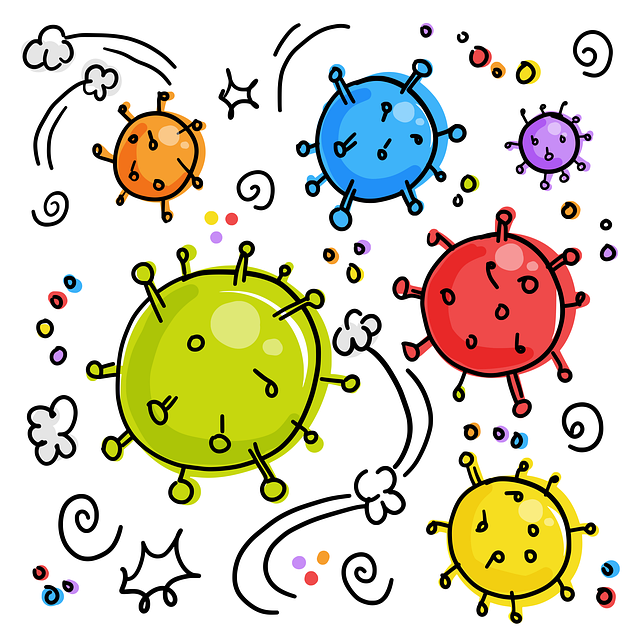Oh, so glibly prescriptive: We think, therefore we judge
By
Jack Aslanian
Things will happen without anyone being blameable for them. So be Zen. Be patient. Concede that inevitability and unpredictability are part and parcel of our nature and our fate and destiny. And if your purpose to delve into this essay has been to discover failsafe ways to evade Covid-19 or to be cured of it definitively, rein in your eyes from skimming on. Read no further, because I do not have your answers. All I can offer you are guesses, opinions, reactions and arguments. That is why I write — to vent disgruntlement, to resist capitulating with calamitous forces, to spotlight, at least, and perhaps also exorcise, the miasmic pall of the scourge that has overshadowed our lives, and is thumbing its nose at us, challenging and testing our abilities, mocking our fragilities and failures, and fears and, yes, even, jealousies.
Any aspiring medical writer who submits for open publication a 3,000-word intelligibly reasoned report on the reasons and imperatives of the wearing of face masks should enjoy this incentive: for a professional lifetime he or she shall by irrevocable fiat (a) be exempted from taking a certifying exam to be qualified as a medical writer, and (b) in the course of our various and sundry colloquia shall enjoy blanket forgiveness for prefacing his/her answer to a question from the floor with “That is a very good question.” Both topics are rife: of how sincerely to hail replies to questions aired at meetings, as of masks. An informal observational study (through fogged eyeglasses, if full transparency of methodology is needed) leads to the conclusion that just 20% of the public these days actually use face masks where and the way they should be used — and of them a good [here “a good” is not used as an adjective to indicate approval of quality but as a relative measure of amplitude] 30-40% do that with their nostrils in full display mode, as if they, the nostrils, were dedicated weathervanes sworn to churning and sampling the air above public walkways and to aid maintain thereon unfailing levels of self-caressing air turbulence.
Increasingly self-indulgent we, citizens of the world, also are living in times nocent, bizarre, and, nightmarishly unsettling. The following questions legitimately could be posed and debated, but the inferences of that kind of exercise should not be used to further inspire self-pampering relaxation. I do not pose the questions for the consolations questioning and replying could provide, but raise them intentionally tongue in cheek. That they could be raised should not bolster suppositions that the battle has all but expertly been joined.
Should we not include among the menaces of our current scourge the alcoholic vapours of hand sanitizers — of which inebriating levels soon could reach worldwide? Does no one nowadays remember Freon or ozone or greenhouse gases? Will alcohol and hydrogen peroxide not chafe our hands and polish our nares? Sightings of gloves or masks abandoned haphazardly on pavements prompt mixed reactions: approving on the one hand, because they evidence abidance, albeit partial, with recommended prophylactic practices. But on the other, have they not been discarded with no show of remorse, or effort to replace, or both? At what environmental risk or risks then?
Inescapable trash is generated and added to our now-suddenly-even-more-insalubrious environment. Trash is generated by the illness, trash by the testers on their campaigns of attestation, trash of the healers and the healing. Self-proud take-out containers appear empowered to accumulate. Sanitising compounds sublimate. Obstructive scooters are abandoned anyhow. Besides those we also have what could be summed up as verbal and digital trash, the jetsam and flotsam floating atop the tsunami of topical focus consisting of facile verbiage, for example, run-amok, trashy anti-mask manifestos, specious trashy arguments, positions and counter-positions in the panic-mongering, “woe-leading” [sic, as opposed to cheerleading], doomsday-evoking platoons of opportunist, manipulative mass publishing... Personally, it would be less exasperating not to write about them at all, to remain self-protectively distanced, and to shun pushing back on the medias’ wanderings too far from the essentials. Nevertheless, to allow distaste for the tools and tactics of the enemy to force one to desist from writing could be considered a form of spineless capitulation to that enemy.
Not surprisingly, the discourse about the novel corona virus is vast and multifaceted, and little doubt writers, especially medical writers, are well positioned to give it depth and logical coherence. We devise new words, nouns or adjectivals, or we use — read also “abuse” — established words and concepts in new ways. We are part of the media and yet also rely on the media; we contribute to it, and we critique it. The characterisations fashionably bandied in the course of opining on the shortfalls of the media are all too familiar to us — and well worn: “mass media” (often used as disparagement), conspiracy, manipulation, muddling. In place of ethical, transparent reportage, we are as likely as not to find spurious news making and dissemination of opinion (camouflaged adroitly or not). Media make sure that we see and hear words. Words engage our thoughts and mold and imprint them, and we in turn them. In these mortifying times we cannot fully bypass embroilment in the parsing of words. That comes with the curse that the scourge has gifted us.

The utmost lynchpin in the lexicon of the current pandemic is, of course, “corona virus”, with others of its kin keeping it company. Their prominence in first rank overshadows two other determinative catchwords: “case” and “testing”. So weighty and fraught are the discourses in which these two figure that it is difficult to dispel the sentiment that when we read or hear them we are expected to kowtow and invoke them entirely in bold capital letters — CASE, TESTING. Yet, there is a problem. The editorial brushstrokes in which much of the populist media design those words and concepts for our consumption easily can appear astonishingly — and shamefully — logic defying. For the purpose of this essay let me take one of these metrics, “case” count, as an example.
“Case” simply could mean an individual who has been tested and on the basis of a “positive test” is considered to have (a) been exposed to and (b) to have incorporated the novel corona virus — i.e. potentially contagious and infective person.
But wait. Back down and add to the preceding sentence one or more of the following stipulations, qualifications, or questions:
- Assuming that the test is a reliable test;
- Assuming that the test was correctly administered;
- Assuming that we confidently can factor in the reliability of the testing method(s) used, and make adjustments for false positives or false negatives?;
- Regardless of whether or not the person tested has had any symptoms of Covid-19;
- What is/are the motivation/s behind taking the test? (Vide “selection bias” in scientific research.)
- How do you use the data gleaned from mass testing?
- If the test result is a true negative, for how long after the date of the test can the testee and her/his contacts feel safe before they agitate to be re-tested? Is there concern that a candidate for a second test might have been exposed to the virus after his/her initial test?
Further, for case identification and tracking to be unequivocally useful, all of the following metrics must be determined and statistically wrangled:
- Number of persons tested — in a defined geographic area, within a certain time period;
- How were the testees chosen for testing? Truly randomly? Out of a population size how defined?;
- How many of the testees tested positive? Out of how many total tested.
Many otherwise respectable (and decidedly unbiased) publications dutifully publish a “case report” — the number of the individuals on a given day (and cumulatively since the inception of systematised testing) who tested positive. They however treat as if irrelevant and dismissible the overall numbers of the persons who tested positive or negative, or the overall population of a, for example, country. Partially expository, the media therefore give their public kindling for speculations and panic, but fragmentary disseminations of metrics also serve to bolster false senses of security, for peoples’ inclination is to believe that anything that can be numbered also can be managed. Thus the public is treated to a deceptive and odious concoction, an image of a bogeyman shackled by science. As delivered to the public by the media a “case” is to be feared, a case is to be ostracised, and perhaps most execrable because of that, a case is to be pitied. Asymptomatic he or she may be, and thereby ostensibly protected, but being positively identified stigmatises a “case” — as if a leprous beast branded for life.
The media’s often rightfully maligned influence on how we regard the pandemic takes many forms. Our “new normal” rapidly is being populated by the media versions of objects, needs, opinions, aspirations and actions. Among their chief failures: mass media do not educate dutifully, disinterestedly, or effectively, and they could be considered complicit in the infantilisation of the public. We are inadequately immunised against the infection of the public by the media. Combine that void with feebleness in the ranks of leadership, and we have the makings of an endemic of disinformation conducive to jitters. For example, prominent red headlines daily in a major newspaper tell us [as if it were a distinction to boast about] that the US “leads all nations” in the cumulative number of residents who have tested positive to the corona virus: exceeding 8 million — 8,000,000+ in late October. My impulse is to react to such perfunctory and panic-rousing publishing with an indignant “So.” What is the context? What do we do with that bit of information when we are not provided the size of the US population or a tabulated range of severity or benignity suffered or enjoyed [sic] by those who have tested positive. How many of those were so severely infected by the corona virus as to require drastic isolation and intensive hospitalisation? And conversely, at the other end of the spectrum, how numerous were those who remained positively hale [pun is just coincidental] and blessed? Would they muster self-envy and self-congratulation? Or perhaps, acknowledging the distinction, guilt ridden or embarrassed perhaps for having dodged the scourge — albeit clearly for the time being — and fearful of evil eyes, could they be driven to living in camouflage and incognito?
They are real. The fears of illness and dying are too immediate and justifiably intense to allow all but distracted and acquiescent tangential forays into the concepts of language, vocabulary building, rhetoric, or diction. Atop each other, into the barbican and watchtowers, sentinels, defenders and purported sharpshooters have staggered, and now are jam-packed like stiffly-, gymnastically-contorted and paretic quivering sardines that jostle each other’s aims, while they wait for — they do not know yet! — destiny to take charge of answering their prayers. Yet, they are impatient. Despite disarray among their protagonists, similar battles have been waged in the past — and won. We must continue to remain engaged, and also defend ourselves against inaccuracies, until chance serves us the effective escapes and cures. Indeed, relief from such predicaments as the pandemic tends to depend as much on committed engagement as on luck. To counter misfortune summarily there often needs to be fortune.


